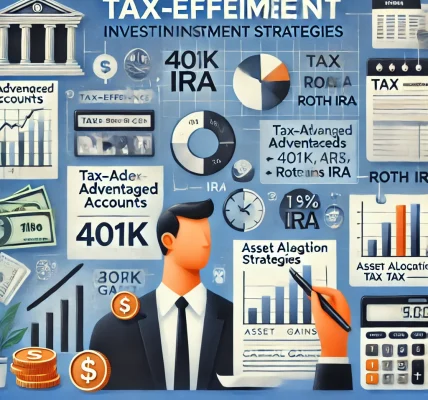As a business owner, managing expenses and minimizing tax liability is a crucial part of maintaining profitability. One powerful tool that businesses can leverage to reduce taxable income is depreciation. By understanding how depreciation works and how to apply it effectively, you can take advantage of significant tax savings while still maintaining your assets. In this guide, we’ll explore how to use depreciation as a tax-saving tool for businesses and the key strategies for maximizing its benefits.
1. What is Depreciation?
Depreciation is the process of allocating the cost of a tangible asset over its useful life. Instead of deducting the full cost of an asset in the year it is purchased, depreciation allows businesses to spread out the expense over several years. This results in a yearly deduction that reduces taxable income and, consequently, the amount of taxes a business owes.
For example, if your business purchases a piece of equipment for $10,000 and it has a useful life of 5 years, you can depreciate the cost of the equipment over that period. This means you could claim a portion of that $10,000 each year as an expense, reducing your taxable income.
2. Types of Depreciation Methods
There are several depreciation methods businesses can use, each with its own tax benefits and requirements. The most common methods are:
a) Straight-Line Depreciation
This is the simplest and most widely used depreciation method. Under straight-line depreciation, an asset’s cost is evenly spread out over its useful life. For example, if a piece of machinery costs $5,000 and has a useful life of 5 years, you would deduct $1,000 each year for 5 years.
Advantages:
- Predictable and easy to calculate.
- Provides a steady, consistent tax deduction each year.
b) Double-Declining Balance Depreciation
This method accelerates depreciation, allowing businesses to deduct a larger portion of the asset’s cost in the early years of its useful life. Double-declining balance uses a formula that results in higher depreciation expenses in the initial years, and smaller deductions in later years.
Advantages:
- Larger deductions upfront, which can be beneficial for businesses looking to reduce taxes in the short term.
- Ideal for assets that lose value quickly, like technology or vehicles.
c) Section 179 Expensing
Section 179 of the IRS tax code allows businesses to deduct the full cost of qualifying assets in the year they are purchased, rather than depreciating them over time. This deduction is capped at a certain limit, which is adjusted annually (for 2023, the limit is $1.16 million, with a phase-out threshold of $2.89 million).
Advantages:
- Immediate tax deduction for the full purchase price, significantly reducing taxable income in the year of purchase.
- Ideal for businesses that need to make large capital purchases.
d) Bonus Depreciation
Bonus depreciation allows businesses to deduct a percentage of the cost of qualifying property in the year the asset is placed in service. For 2023, the bonus depreciation rate is 100%, meaning businesses can deduct the entire cost of qualifying assets in the year of purchase. This provision is set to phase down starting in 2023, but it’s a valuable tool for reducing taxes in the short term.
Advantages:
- Immediate tax relief for large purchases.
- Can be used in combination with Section 179.
3. How Depreciation Reduces Your Taxable Income
By depreciating assets, businesses reduce their taxable income, which lowers the amount of taxes they owe. This can be particularly useful for businesses with significant capital expenditures, such as purchasing machinery, vehicles, or real estate.
Example:
Imagine you own a small business and purchase a new delivery truck for $30,000. Using Section 179, you can deduct the full cost of the truck in the year of purchase. If your business generates $100,000 in revenue and has $30,000 in allowable depreciation deductions, your taxable income will be reduced to $70,000. This means you’ll only be taxed on $70,000 rather than the full $100,000, resulting in significant tax savings.
4. Maximizing Depreciation Benefits
To get the most out of depreciation, businesses should consider the following strategies:
a) Plan Your Capital Purchases Wisely
Timing your asset purchases can help you take advantage of depreciation. For example, if your business is near the end of its tax year, purchasing qualifying assets before year-end can help reduce taxable income for that year. Conversely, if you’re expecting higher income in the next year, you might delay purchasing assets to take advantage of depreciation in the future.
b) Consider the Impact of Bonus Depreciation and Section 179
If your business has made significant capital investments, consider using Section 179 or bonus depreciation to maximize your tax savings in the short term. While Section 179 allows you to expense the full cost of qualifying property, bonus depreciation lets you deduct a portion of the cost as well. For businesses looking to offset large profits in the year of purchase, these options can provide immediate tax relief.
c) Track and Manage Your Assets Carefully
Accurate record-keeping is essential for depreciation. Make sure to track the acquisition date, cost, useful life, and depreciation method for each asset. This will ensure you’re claiming the correct deductions and staying compliant with tax regulations.
d) Use Depreciation to Offset Income in High-Profit Years
In years when your business generates substantial income, depreciation can be an effective tool to reduce the tax burden. By carefully planning your depreciation strategy, you can offset higher profits with depreciation deductions, resulting in lower taxable income and reduced taxes.
5. Depreciation and Your Bottom Line
While depreciation offers substantial tax-saving opportunities, it’s important to remember that it’s a non-cash expense. Depreciation doesn’t actually cost your business any money; rather, it allows you to spread out the cost of an asset over its useful life, improving cash flow. The tax savings from depreciation can free up cash that can be reinvested into your business or used for other needs.
6. Depreciation and Tax Planning
For business owners, depreciation is not just a tool for reducing taxes—it’s also a key component of overall tax planning. By understanding how depreciation works and implementing the right strategy, you can minimize your tax liability, improve your business’s cash flow, and create a more efficient financial plan.
Be sure to work closely with your tax advisor or accountant to identify the best depreciation methods for your business. With their guidance, you can ensure that you’re using depreciation to its fullest potential and making informed decisions that benefit your bottom line.
7. Final Thoughts
Depreciation is one of the most effective ways for businesses to save on taxes, particularly when used strategically. Whether you’re using straight-line depreciation for steady deductions, leveraging Section 179 for immediate expensing, or utilizing bonus depreciation to maximize your tax savings in the short term, depreciation offers a range of options for businesses to reduce their taxable income and improve cash flow.




